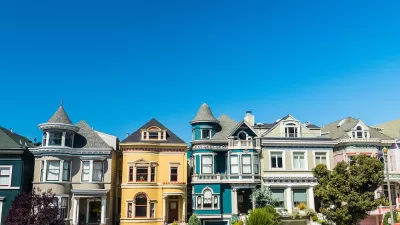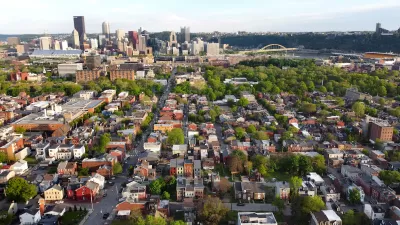Fast Company blogger Michael Cannell says the economic crisis stands to make big winners out of the new urbanists.
"The downturn has accomplished what a generation of designers and planners could not: it has turned back the tide of suburban sprawl. In the wake of the foreclosure crisis many new subdivisions are left half built and more established suburbs face abandonment. Cul-de-sac neighborhoods once filled with the sound of backyard barbecues and playing children are falling silent. Communities like Elk Grove, Calif., and Windy Ridge, N.C., are slowly turning into ghost towns with overgrown lawns, vacant strip malls and squatters camping in empty homes. In Cleveland alone, one of every 13 houses is now vacant, according to an article published Sunday in The New York Times magazine.
The demand for suburban homes may never recover, given the long-term prospects of energy costs for commuting and heating, and the prohibitive inefficiencies of low-density construction. The whole suburban idea was founded on disposable spending and the promise of cheap gas. Without them, it may wither. A study by the Metropolitan Institute at Virginia Tech predicts that by 2025 there will be as many as 22 million unwanted large-lot homes in suburban areas."
Thanks to Neil Takemoto
FULL STORY: Suburbia R.I.P.

Maui's Vacation Rental Debate Turns Ugly
Verbal attacks, misinformation campaigns and fistfights plague a high-stakes debate to convert thousands of vacation rentals into long-term housing.

Planetizen Federal Action Tracker
A weekly monitor of how Trump’s orders and actions are impacting planners and planning in America.

In Urban Planning, AI Prompting Could be the New Design Thinking
Creativity has long been key to great urban design. What if we see AI as our new creative partner?

Florida Seniors Face Rising Homelessness Risk
High housing costs are pushing more seniors, many of them on a fixed income, into homelessness.

Massachusetts Budget Helps Close MBTA Budget Gap
The budget signed by Gov. Maura Healey includes $470 million in MBTA funding for the next fiscal year.

Milwaukee Launches Vision Zero Plan
Seven years after the city signed its Complete Streets Policy, the city is doubling down on its efforts to eliminate traffic deaths.
Urban Design for Planners 1: Software Tools
This six-course series explores essential urban design concepts using open source software and equips planners with the tools they need to participate fully in the urban design process.
Planning for Universal Design
Learn the tools for implementing Universal Design in planning regulations.
Gallatin County Department of Planning & Community Development
Heyer Gruel & Associates PA
JM Goldson LLC
City of Camden Redevelopment Agency
City of Astoria
Transportation Research & Education Center (TREC) at Portland State University
Jefferson Parish Government
Camden Redevelopment Agency
City of Claremont





























